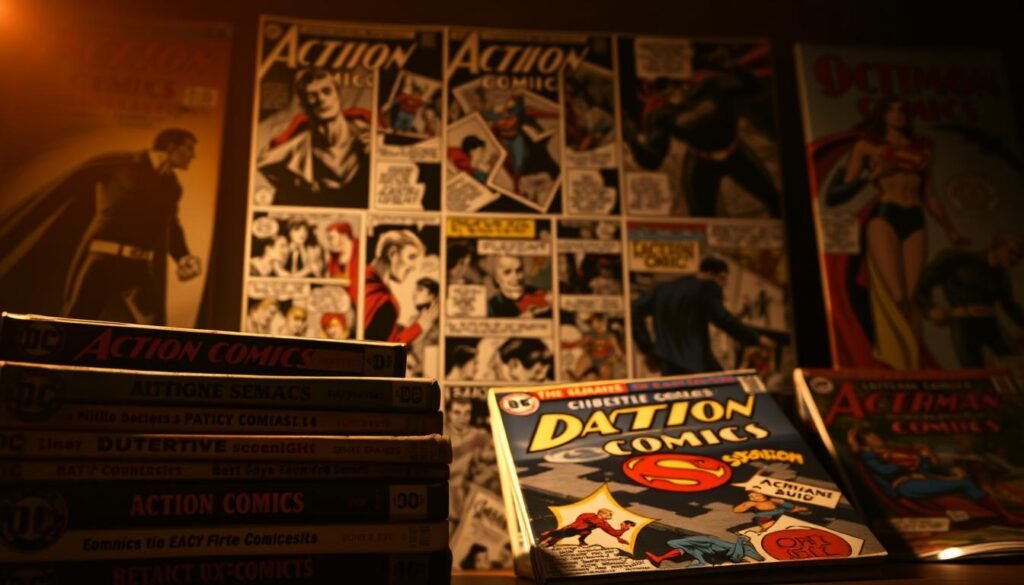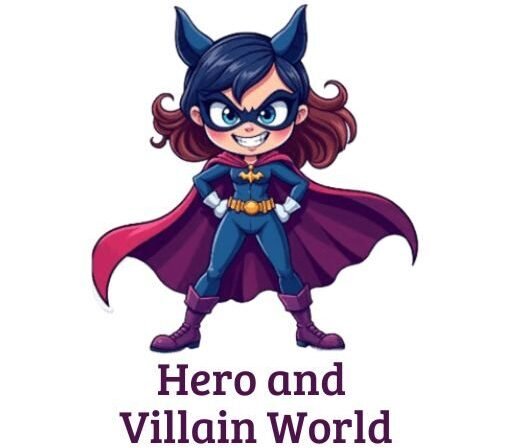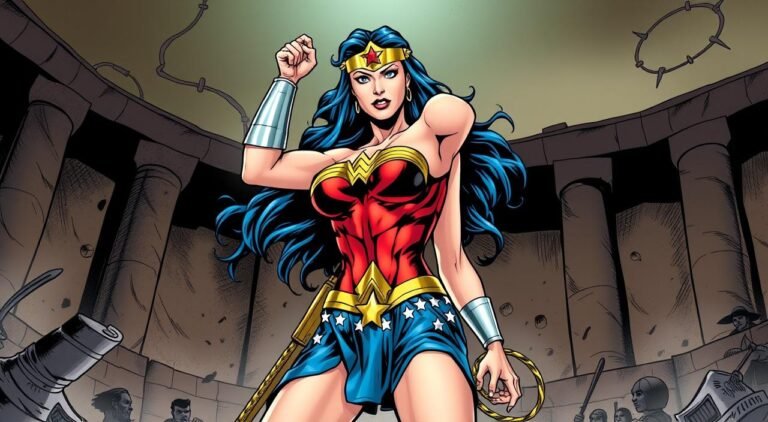The Origin of DC Comics

Growing up, I was always drawn to the vibrant pages of comic books. They were more than just stories; they were gateways to imagination.
Among them, DC Comics stood out as a pioneer in the comic book world. Founded in 1934, this company has shaped the history of the industry in ways that still resonate today.
From its early days as National Allied Publications to its iconic rebranding, DC Comics introduced legends like Superman and Batman.
These characters didn’t just fill pages; they sparked a cultural revolution. Their stories became a blueprint for modern storytelling in comics and beyond.
Exploring this history feels like uncovering the roots of a global phenomenon. It’s a journey through innovation, creativity, and the enduring power of a good book. Let’s dive into how this company changed the comic world forever.
Introduction
My first encounter with DC Comics was pure magic. I was flipping through an old stack of comics when I stumbled upon Detective Comics.
That moment sparked a lifelong fascination with these stories. The idea of a superhero fighting for justice felt larger than life, and I was hooked.

Detective Comics, the series that gave DC its name, introduced me to a world of intrigue and adventure. It wasn’t just about the character of Batman; it was the depth of storytelling that captivated me.
Each panel felt like a window into a universe where anything was possible.
When I read Superman’s debut in Action Comics #1, I was blown away. This first comic featuring the Man of Steel wasn’t just a story; it was a revolution.
It showed me how a single creator could inspire millions with a bold idea. That’s the power of DC Comics—it’s more than entertainment; it’s a cultural force.
What makes these stories so enduring? It’s the way they blend relatable struggles with extraordinary feats. Whether it’s Batman’s quest for justice or Superman’s hope for humanity, these characters resonate because they reflect our own dreams and fears. That’s why I keep coming back to them, and why they continue to inspire fans worldwide.
If you’re curious about how other comic universes evolved, check out this history of fantasy comics. It’s a fascinating look at how storytelling has shaped our imagination.
Creator, Origins, and Early Beginnings
When I think about the roots of comic storytelling, one name stands out: Malcolm Wheeler-Nicholson. His vision laid the groundwork for what would become one of the greatest comic companies.
In 1934, he founded National Allied Publications, a move that would forever change the industry.

Nicholson’s journey wasn’t easy. Financial challenges were constant, but his determination never wavered. He launched New Fun: The Big Comic Magazine in 1935, the first American comic with entirely original material. This was a bold step, as most comics at the time relied on reprints.
Despite the struggles, Nicholson’s vision began to take shape. Partnerships became essential, and in 1937, Detective Comics was born.
This marked a turning point, setting the stage for iconic characters like Batman. The evolution from National Allied Publications to Detective Comics Inc. was a testament to Nicholson’s resilience.
These early beginnings were more than just a series of events. They were the foundation of a legacy that continues to inspire.
If you’re curious about how this journey unfolded, check out this history of DC Comics. It’s a fascinating look at how creativity and perseverance shaped an empire.
Malcolm Wheeler-Nicholson and the Birth of a Giant
Malcolm Wheeler-Nicholson was a man ahead of his time. His belief in original storytelling set him apart. He saw comics as more than just entertainment; they were a medium for innovation.
His work with New Fun modernized the comic format, paving the way for future creators.
From National Allied Publications to Detective Comics
The transition from National Allied Publications to Detective Comics Inc. was a pivotal moment. It wasn’t just a name change; it was a shift in direction.
This evolution laid the groundwork for the expansive universe we know today. Nicholson’s early efforts were the seeds of a cultural phenomenon.
Each origin story is a thrilling, self-contained bedtime story. Baby Kal-El makes a dramatic escape from the planet Krypton, arriving on Earth in a rocket ship. Wonder Woman and Nubia are shaped out of clay by their mother Hippolyta, and given their powers by the gods. Each Green Lantern—Hal Jordan, John Stewart, and Jessica Cruz—came by their power rings in interesting ways. Young super heroes will love learning about how their favorite characters came to be.
First Appearances and Magazine Features
Superman’s debut in Action Comics #1 changed everything. Released in June 1938, this issue marked the birth of the superhero genre. It wasn’t just a comic; it was a cultural milestone that redefined storytelling.
Action Comics #1 introduced the world to the Man of Steel, created by Joe Shuster and Jerry Siegel. Their vision of a hero with extraordinary powers and a moral compass resonated instantly.
The series sold out its initial print run of 200,000 copies, a testament to its immediate success.

What made this issue groundbreaking? It combined action, drama, and relatability in a way no comic had before. Superman’s struggle for justice mirrored the hopes of a generation. This character-driven narrative set a new standard for the series that followed.
Superman’s Debut in Action Comics #1
When Action Comics #1 hit the stands, it was unlike anything readers had seen. Superman’s strength, speed, and dedication to truth captivated audiences. The issue wasn’t just about a hero; it was about hope and resilience.
Shuster and Siegel’s partnership was key to this success. Their collaboration brought Superman to life, blending art and storytelling seamlessly. This creative duo laid the foundation for a legacy that continues to inspire.
Key Magazines and Early Publications
Early magazine features played a crucial role in amplifying DC’s presence. Titles like Detective Comics and All-American Comics expanded the universe, introducing new characters and stories.
These publications weren’t just comics; they were cultural touchstones.
Here’s a look at some key early issues and their impact:
| Issue | Year | Significance |
|---|---|---|
| Action Comics #1 | 1938 | Superman’s debut, birth of the superhero genre |
| Detective Comics #27 | 1939 | First appearance of Batman |
| All Star Comics #8 | 1941 | Wonder Woman’s debut |
These early issues didn’t just entertain; they shaped the future of storytelling. They proved that comics could be more than just escapism—they could inspire and unite.
Iconic Characters and Their Impact
From the moment I first saw Superman soar across the page, I knew comics would never be the same. Characters like him, Batman, and Wonder Woman didn’t just fill panels—they shaped the superhero genre and became cultural icons.
Their stories resonated with fans worldwide, proving that heroes could be both extraordinary and relatable.
Evolution of the DC Trinity: Superman, Batman, and Wonder Woman
Superman’s debut in 1938 introduced the world to a hero with unmatched strength and a heart of gold. He became a symbol of hope, inspiring countless fans.
Batman followed in 1939, bringing a darker edge to the genre. His persona as the Dark Knight explored themes of justice and vengeance, making him a complex and enduring figure.
Wonder Woman arrived in 1941, breaking barriers as one of the first female superheroes. Her strength and compassion redefined what it meant to be a hero.
Together, these three formed the core of the Justice League, a team that showcased the power of unity in the face of adversity.
The Role of Sidekicks and Supporting Figures
Sidekicks like Robin and Batgirl added depth to the stories, offering fresh perspectives and dynamic partnerships.
They weren’t just assistants—they were heroes in their own right, evolving into fan favorites. Supporting figures like Alfred and Lois Lane provided emotional grounding, making the superhero genre more relatable.
The formation of the Justice League in 1960 marked a turning point. It brought together iconic characters, proving that teamwork could amplify their impact.
This dynamic influenced not just comics but also movies, TV shows, and pop culture as a whole.
As a fan, I’ve always been captivated by how these characters grow and adapt. Their stories remind us that heroes, no matter how powerful, are shaped by their struggles and triumphs.
For more on how lesser-known characters rose to fame, check out this insightful article.
The Origin of DC Comics: A Deep Dive
Exploring the early story arcs of DC Comics feels like uncovering the blueprint of modern storytelling. These narratives, crafted during the Golden Age, laid the foundation for a universe that continues to captivate fans.
They weren’t just tales of heroes; they were reflections of societal hopes and fears.

One of the most influential partnerships was between Jerry Siegel and Joe Shuster. Their creation of Superman revolutionized the story of comics, introducing a hero who embodied both power and morality.
This collaboration set a precedent for future writers and artists, proving that teamwork could yield iconic results.
How Early Story Arcs Shaped a Universe
The Golden Age was a time of experimentation and innovation. Writers explored themes of justice, resilience, and hope, often mirroring the challenges of the real world.
These early arcs weren’t just entertaining; they were transformative, shaping the identity of DC Comics.
For instance, Superman’s debut wasn’t just about his powers. It was about his unwavering commitment to truth and justice.
This depth made him relatable, setting a standard for future characters. Similarly, Batman’s darker, more complex narratives added layers to the superhero genre.
Strengths, Weaknesses, and Critical Reflections
While these early stories were groundbreaking, they weren’t without flaws. Some critics argue that the pacing felt rushed, and certain plots lacked depth.
However, their strengths far outweighed these weaknesses. The story arcs introduced themes that resonated with readers, creating a lasting impact.
Reflecting on this era, it’s clear that the contributions of Jerry Siegel and Joe Shuster were pivotal. Their work not only defined the Golden Age but also inspired generations of creators. For more on how comics influenced culture, check out this insightful article.
As a fan, I’m amazed by how these formative years shaped the depth and diversity of DC’s storytelling. They remind us that even the simplest story can leave a profound legacy.
At last, the SECRET ORIGINS of the World’s Greatest Heroes in The New 52 can be revealed! The beginnings of the most popular characters in the DC Universe are finally told here, in stories that fans have been clamoring for since September 2011. Included here are the origins of The Last Son of Krypton and Kara Zor-El, Supergirl, plus the first Robin, Dick Grayson.
Other Media Adaptations and Fascinating Curiosities
Watching my favorite characters leap from comic pages to the big screen felt like a dream come true. Over time, DC’s heroes have become legends not just in print but in films, TV shows, and beyond.
This journey from allied publications to global media giants is a story of innovation and creativity.
From Comics to On-Screen Legends
DC’s transition into other media began early. Characters like Batman and Superman quickly found their way into TV shows and movies.
For instance, Batman’s first TV appearance in the 1960s brought the Dark Knight into living rooms worldwide. This adaptation introduced a new genre of superhero storytelling.
Harley Quinn’s debut in Batman: The Animated Series is another standout moment. Originally created for TV, she became so popular that she was later added to the comics.
This shows how DC’s media adaptations often influence their source material.
Here are some key milestones in DC’s on-screen journey:
- Superman’s first movie in 1978, starring Christopher Reeve, set the standard for superhero films.
- The Justice League animated series introduced John Stewart as Green Lantern, making him a fan favorite.
- Recent films like Wonder Woman and Aquaman have brought DC’s heroes to a global audience.
Lesser-Known Facts and Trivia That Surprise Me
As a longtime fan, I’ve discovered some fascinating trivia about DC’s evolution. Did you know that Batgirl’s first comic appearance and TV debut happened in the same year? This synergy between print and screen has always been a hallmark of DC’s success.
Another surprising fact is how Malcolm Wheeler-Nicholson’s early vision for allied publications laid the groundwork for this media empire. His belief in original storytelling paved the way for characters who could thrive in any genre.
Here are a few more intriguing tidbits:
- Renee Montoya first appeared in Batman: The Animated Series before her comic debut.
- The animated episode “Heart of Ice” redefined Mr. Freeze’s character, influencing later films.
- Static Shock, a lesser-known hero, gained popularity through his animated series and later returned to comics.
These curiosities remind me why DC’s stories continue to captivate fans. Their ability to adapt and innovate keeps them at the forefront of popular culture.
Conclusion
Reflecting on the journey of this iconic publisher, it’s clear how deeply its stories have shaped culture. From the debut of Superman in 1938 to the rise of Green Lantern, each title has left an indelible mark.
These characters didn’t just entertain; they inspired generations.
Over the years, the evolution of this universe has been remarkable. The introduction of the Justice League in 1960 redefined teamwork in the superheroe genre.
Characters like Batman and Wonder Woman became symbols of resilience and hope, proving that stories can transcend time.
As a fan, I’m amazed by how these narratives continue to evolve. They remind us that heroes, no matter how powerful, reflect our own struggles and dreams. For more insights, explore the Hero and Villain World blog.
FAQ
Who founded DC Comics?
Malcolm Wheeler-Nicholson founded the company, initially named National Allied Publications, which later became DC Comics.
What was the first comic published by DC?
The first comic was “New Fun: The Big Comic Magazine,” released in 1935, marking the start of the comic book industry.
When did Superman first appear?
Superman debuted in “Action Comics #1” in 1938, created by Jerry Siegel and Joe Shuster, revolutionizing the superhero genre.
Who are the DC Trinity?
The DC Trinity consists of Superman, Batman, and Wonder Woman, three iconic characters who have defined the brand for decades.
How did DC Comics influence the Golden Age of comics?
DC introduced groundbreaking characters and story arcs during the Golden Age, setting the standard for the superhero genre and inspiring countless creators.
What role did sidekicks play in DC Comics?
Sidekicks like Robin and Wonder Girl added depth to stories, providing relatable figures for younger readers and expanding the universe.
How has DC Comics transitioned into other media?
DC characters have been adapted into movies, TV shows, and video games, becoming cultural icons beyond the pages of comic books.
What are some lesser-known facts about DC Comics?
Few know that Malcolm Wheeler-Nicholson was a military officer before founding the company or that “Detective Comics” inspired the name DC Comics.








